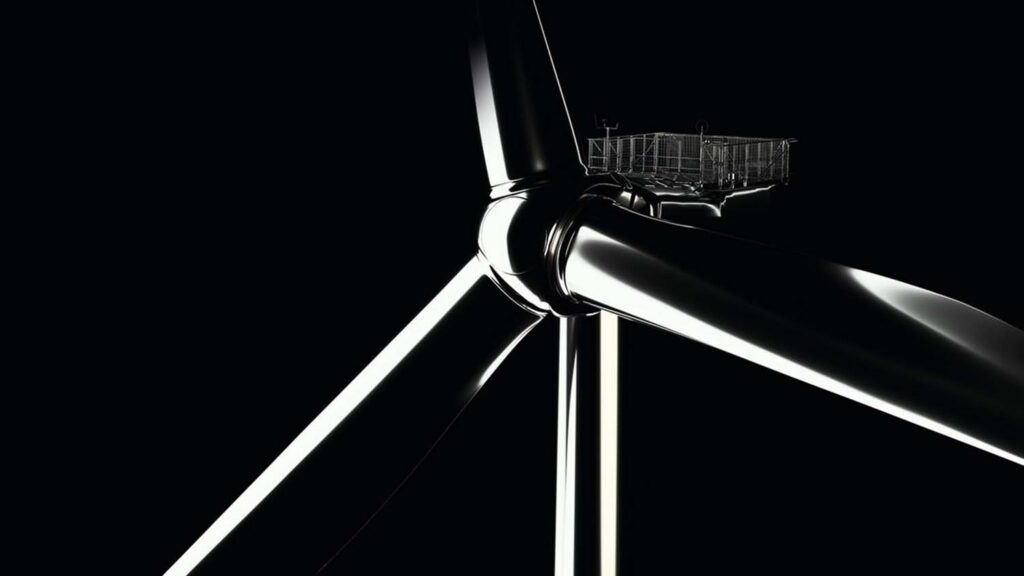Wind power’s sustainability is excellent for electricity generation, but the end of life process for the turbines and their components are something that needs addressing, says Adam Kelvey, a senior associate at Reddie & Grose patent attorneys. This economic view of a turbine’s lifecycle and carbon emissions suggests that once again the solution is to be found with designers and engineers, making blades that are truly circular – in motion and in lifecycle.
The shift away from fossil fuels to renewable energy sources is well underway, albeit slowly. In 2020, a record 47.1 percent of the electricity generated in the UK came renewable sources, and this doesn’t even include nuclear power. The majority of this renewable energy comes from wind power; something the UK is becoming rather good at.
The North Sea is home to the World’s two largest offshore wind farms, with construction of even larger farms already underway in the Thames estuary.
But, before we give ourselves a collective pat on the back, how sustainable are these giant windmills? In an effort to understand this, energy economists have tried to calculate the ‘lifetime carbon cost’ of wind power to better compare them to other energy sources.
The overwhelming majority of carbon emissions released over the lifecycle of a wind turbine are generated during its manufacture. Unsurprisingly, the steel tower is responsible for nearly 30 per cent of this, closely followed by the concrete foundations at around 17 per cent.
The production of the carbon fibre blades, and the extraction of the more exotic metals needed in the generator have their own carbon cost.
Upon reaching end-of-life the steel can usually be fully recycled. Yet, the sustainability of repurposing the blades remains a challenge. Currently, the majority of decommissioned fibre reenforced plastic blades end up in landfill; composite materials being notoriously difficult to recycle.
While this may appear to undermine wind power’s green credentials, it should be considered in context. Lifetime carbon emissions for wind power are 99 per cent lower than for coal-fired power stations, 98 per cent lower than gas power stations, and even a surprising 75 per cent lower than solar power.
Size Matters
Despite being in a good position already, the industry is not resting on its laurels. There are a few relatively straightforward changes which can drive down the lifetime carbon cost still further.
Firstly, wind turbines are getting bigger. Much bigger. In the late 1980’s, the largest wind turbines had a diameter of 30 meters and could generate 300 kilowatts of power. Today, Chinese manufacturer Mingyang Smart Energy is planning a 16-megawatt turbine with a staggering 242 metre diameter.
Bigger turbines extract more energy from the wind, meaning fewer turbines need to be produced. The increased size also allows the turbines to operate through a greater range of wind speeds.
Secondly, a huge proportion of the total carbon cost could be saved if the steel for the towers could be produced more sustainably. Iron for steel is typically extracted from iron ore in blast furnaces. In the furnaces, coke is oxidised releasing considerable amounts of carbon dioxide as a by-product. The solution may come from Sweden where several teams are working towards fossil-free steel.
Hybrit, a joint venture between several Swedish steel firms, believes greenhouse emissions can be eliminated by extracting iron using a direct reduction process described in patent application number WO 2022/115024 Α1. The process replaces the coke with hydrogen gas and generates water, rather than carbon dioxide, as the by-product.
Finally, the lifetime carbon cost of onshore wind turbines is considerably lower than their offshore alternatives. Unsurprisingly, offshore turbines are more complex sophisticated structures, requiring more material. As a result, onshore turbines are cheaper to install and maintain, and generally have a longer life span. However, as is often the case with environmental issues, policy decisions are guided as much by public opinion as they are by the science.
The UK’s 2022 Energy Security Strategy sets a target to generate an ambitious 50 gigawatts of power from offshore wind farms by 2030. For context, in 2020 the UK’s total energy generation capacity from all sources was 75.8 gigawatts.
Regarding onshore wind, the same strategy states that the government recognises the ‘range of views’ on onshore wind: ‘Our plans will prioritise putting local communities in control”, and included no targets whatsoever’.
The lifetime carbon cost of onshore wind turbines is considerably lower than their offshore alternatives… However, policy decisions are guided as much by public opinion as they are by the science
Winds of Change
While the industry is pretty clear on how to make wind turbines more efficient, what to do with the turbines, and in particular the composite blades, at the end of their life remains a problem. The European Composites Industry Association estimates that by 2025, decommissioned wind turbine blades will account for 10 percent of the global thermoset composite waste.
Today, a limited number of used blades are cut-up and used as filler in concrete. Slightly more creative solutions have been tried in Denmark where old blades have been used to construct bike shelters. Similarly, in Ireland there are plans to use old blades to form attractive foot bridges. Intriguing as these plans are, they will not be enough to account for the sheer number of decommissioned blades currently heading for landfill.
To deal with this growing mountain of used blades, Aker Offshore Wind has collaborated with The University of Strathclyde to develop a novel process to separate the glass-fibre and resin components from composite turbine blades to allow the glass-fibre to be reused. This collaboration has led to the construction of the UK’s first turbine blade recycling plant. If successful, this technique could represent a key step towards the circular supply chain model needed to keep turbine blades out of landfill.
Others are planning to make turbine blades more sustainable from the get-go. For example, sustainable energy contractor Alliance for Sustainable Energy LLC, which works for the US National Renewable Energy Laboratory, has developed a thermal welding process which allows turbine blades to be manufactured from recyclable thermoplastic rather than the traditional non-recyclable thermosetting plastic.
The process, described in patent application number WO 2020/117801 Α1, includes providing copper heating elements between thermoplastic components to facilitate thermal welding. The heating elements remain embedded in the joint once the blade is constructed. Not only does this technique allow the blade to be formed from a more recyclable material, but is also eliminates the need for adhesives which can extend the life of the blade.
In Europe, specialist materials company Arkema has teamed up with the Zero wastE Blade ReseArch (or ZEBRA) consortium in an effort to develop blades which are more readily recycled. As described in patent application number WO 2018/115342 Α1, Arkema has developed a new liquid thermoplastic resin material known as Elium which may be recycled using either mechanical or chemical processes. In March 2022, the company announced the completion of the world’s largest fully-recyclable turbine blade, with a length of 62 metres.
The outlook for wind power seems relatively positive. Already a very efficient power source, bigger, longer lasting turbines, made from ‘green’ steel are set to make wind power even more attractive. What to do with the used blades poses slightly more of a challenge. A bridge here or a bike shelter there may be a novelty, but the real step change will come from designing the blades with the end-of-life in mind. As with so many industries, this is the only way to close the supply chain loop and make wind power truly sustainable.

Adam Kelvey handles patents in the engineering, materials and consumer products fields for Reddie & Grose – a firm of patent and trade mark attorneys. He graduated from the University of Oxford with a Master’s degree in Materials Science. In his final year he investigated graphene growth on catalytic substrates with a view to producing massive graphene single crystals.






